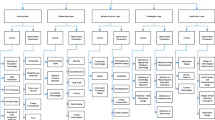Abstract
Six percent of the total cost of healthcare delivery in Australia is from buying, building and maintaining physical assets. Current practice does not measure the efficient use of existing clinical spaces prior to making funding decisions for service expansion, remodeling or relocation. Healthcare service delivery can be increased through existing assets by optimizing the use of clinical space. The wait times for healthcare service consumers and capital expenditure pressures could be reduced, which would result in increased funds available for frontline services. Sensor technology has been used to study aspects of time in ambulatory outpatient clinics using Infra-red Tags or Radio Frequency Identification tags. This paper proposes the use of Internet of Things (IoT) technology to assist in the optimization of high-value clinical spaces and presents phase one of the project where a trial was held in a non-clinical location to evaluate sensor performance. In Phase two, sensors will be installed to count people across an ambulatory outpatient clinic in a live public healthcare environment to understand clinical space utilization and inform decision-makers. The data produced by the sensors on room use is processed for visualization in “dashboard” format so frontline and executive staff have evidence-based decision-making support for space optimization strategies. This paper presents the phase one trial and preliminary results that show the disparity space utilization patterns between the IoT sensed occupancy data with the current room reservation system in a non-clinical space.




Similar content being viewed by others
References
Australian Institute of Health and Welfare. Health expenditure Australia 2015–16. https://www.aihw.gov.au/getmedia/3a34cf2c-c715-43a8-be44-0cf53349fd9d/20592.pdf.aspx?inline=true (2017).
Cayirli T, Veral E, Global I. Outpatient scheduling in health care: a review of literature. Prod Oper Manag. 2003;12(4):519–49.
Ahmadi-Javid A, Jalali Z, Klassen KJ. Outpatient appointment systems in healthcare: a review of optimization studies. Eur J Oper Res. 2016;258(1):3–34.
Farahmand K, Karim R, Srinivasan R, Sajjadi SR, Fisher L. Clinic space design using discrete event simulation. In: IIE annual conference. Proceedings, pp. 1–8 (2011).
Cote MJ. Patient flow and resource utilization in an outpatient clinic. Socio-Econ Plan Sci. 1999;33(3):231–45.
Overmoyer B, et al. Using real time locating systems (RTLS) to redesign room allocation in an ambulatory cancer care setting. Alexandria: American Society of Clinical Oncology; 2014.
Stahl JE, Drew MA, Kimball AB. Real-time location systems, normative messaging and modifying clinician behavior: a pilot study. Health Syst. 2014;3(3):165–72.
Harper PR, Gamlin H. Reduced outpatient waiting times with improved appointment scheduling: a simulation modelling approach. OR Spectr. 2003;25(2):207–22.
Bratt JH, Foreit J, Chen P-L, West C, Janowitz B, De Vargas T. A comparison of four approaches for measuring clinician time use. Health Policy Plan. 1999;14(4):374–81.
Acknowledgement
This research has been funded by the Townsville Hospital and Health Services; Study, Education, Research Trust Account (SERTA) Grant.
Author information
Authors and Affiliations
Corresponding author
Additional information
Publisher's Note
Springer Nature remains neutral with regard to jurisdictional claims in published maps and institutional affiliations.
Rights and permissions
About this article
Cite this article
McNabb, T., Myers, T., Wicking, K. et al. Optimizing spatial healthcare assets with Internet of Things. Health Inf Sci Syst 6, 11 (2018). https://doi.org/10.1007/s13755-018-0052-2
Received:
Accepted:
Published:
DOI: https://doi.org/10.1007/s13755-018-0052-2



